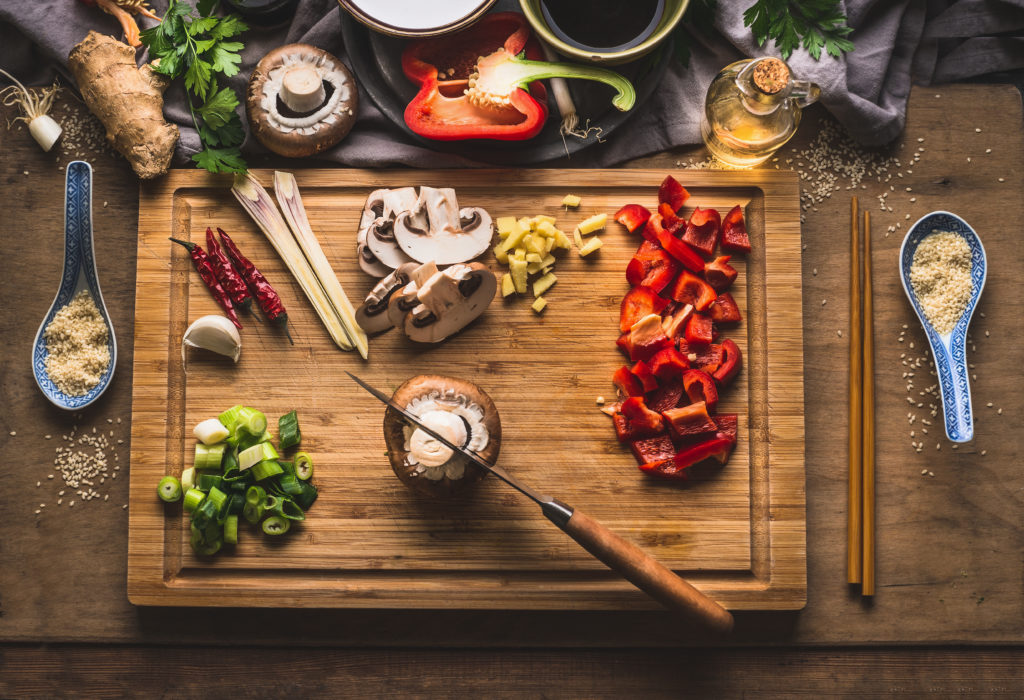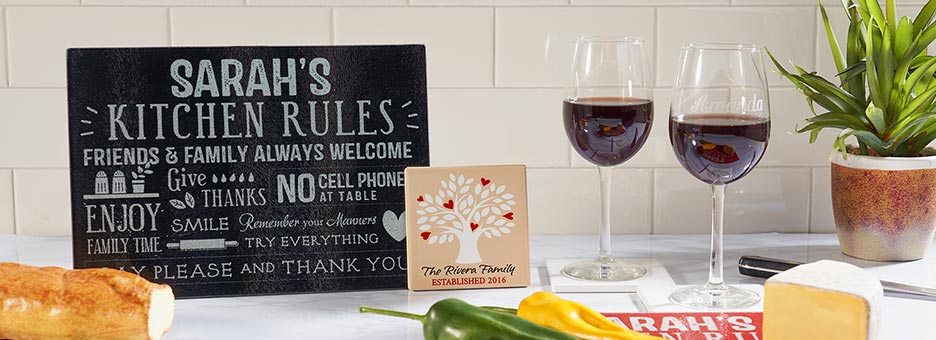
A good cutting board is an essential piece of equipment in every kitchen, but what do you really know about cutting board safety? These handy cook’s helpers come in all sizes and shapes and can be made of various types of wood from maple to oak to teak and more, plastic, stainless steel, bamboo, silicone, tempered glass, marble, ceramic, granite, rubber, and probably other materials we’ve yet to discover! Some have juice grooves, handles, and hidden compartments, while others sport rubber feet, holes, and straps for hanging. Cutting boards can even be personalized with a name and/ or monogram, and given as gifts for engagements, weddings, anniversaries, and housewarming. When it comes to cutting boards, we certainly have a wide variety of materials, styles, and sizes from which to choose. Is there a “best” type or material for a cutting board? Each type has its merits, but as with all things in life there are pros and cons no matter which you choose. Let’s discuss some basic cutting board safety today.

Cleaning your cutting board
According to the United States Department of Agriculture (USDA), to keep all types of cutting boards clean, they should be washed with hot, soapy water after each use (using a kitchen brush is great for getting inside cracks and crevices), rinsed well with hot, clear water and air dried or patted dry with clean paper towels. To help avoid cross contamination, consider using one cutting board for fresh produce and a separate one for raw meat, poultry, and seafood. All non-porous plastic, acrylic, or tempered glass boards and solid wood boards can be washed in a dishwasher, although laminated boards may crack and split in the dishwasher. Always check the manufacturer’s suggestions to be certain your cutting board is safe in the dishwasher.
Bamboo cutting boards are even harder and less porous than hardwoods and will not damage your knives. You can sanitize your cutting boards with a cleaning solution made of one tablespoon of unscented, liquid chlorine bleach per gallon of water. Flood the surface and allow the solution to sit for several minutes. Rinse with clear water and air dry or pat dry with a clean cloth or paper towels.
Natural ways to clean and sanitize your cutting board
For those of you who don’t like the idea of sanitizing your cutting board with bleach, there are natural alternatives. Vinegar is a nice, chemical-free method of cleaning your cutting board. Simply mix one part white vinegar to four parts water and soak your cutting board in the solution for a few minutes. Hydrogen peroxide can be substituted for the vinegar if you don’t have any on hand. Rinse thoroughly and drip dry or pat dry with a clean cloth or paper towels. No matter what you soak your cutting board in, do not soak it for more than a few minutes. Otherwise, you risk warping or cracking the wood.
You may have seen your mother or grandmother breaking out the coarse salt to clean her cutting boards. Combining lemon juice with coarse salt is still a great way to help clean your cutting boards and maintain them in good working order. First, sprinkle the board with your choice of coarse salt such as sea salt or kosher salt. Cut a fresh lemon in half and use the fleshy side to spread the salt down the cutting board on both sides. Let the lemon and salt solution sit for approximately five minutes. Clean the board with a sponge or cloth, rinse, and dry. Toss the used lemon in the disposal and grind it up for a clean, fresh smelling sink.
Maintaining
your wooden
cutting board
If you’re using a bamboo or wooden cutting board, it’s best to oil the cutting board once a month to avoid cracking, dryness, and warping. This important task only takes a few minutes but will help your wooden cutting board stand the test of time by helping it to retain moisture. Start by making sure your cutting board is thoroughly cleaned, using the lemon and salt method described above or another method of your choice, and allow the board to dry thoroughly. Choose a product specifically formulated for wooden cutting boards, or food grade mineral oil. Do not use olive or avocado oil. Rub the oil into the wood in circular motions using a soft cloth or paper towel. Apply a thin coat of oil to the entire surface of the board on both sides and allow the oil to soak into the board for a few hours, up to overnight.
Replace worn cutting boards
All plastic and wooden cutting boards will wear out over time. Once your cutting boards become overly worn or develop cracks, crevices, or have grooves that are difficult to clean, they should be discarded as these spots can harbor bacteria that can lead to food poisoning. Plastic cutting boards can become “fuzzy” with regular use, at which point they should be tossed and replaced with new ones. These plastic boards can hold on to more harmful bacteria than their wooden cousins, as wood can heal itself whereas plastic cannot. Bacteria can work its way beneath the surface of the wood where it will die off eventually; but this is not the case for plastic cutting boards, where harmful bacteria can get caught in knife grooves and remain, despite careful washing by hand or dishwasher. Hard wood cutting boards are better on your knives and will, with proper care and cleaning, outlast those made of plastic. Tempered glass cutting boards are easy to clean and won’t harbor bacteria, but they can be hard on your knives.
They’re not just for food prep anymore!
Cutting boards can be used for more than just slicing bread, cheese, vegetables, and meat; there are all sorts of uses for these handy kitchen tools, even when they’re no longer useful to prepare your food. Before you toss that old cutting board in the trash, consider these clever ways to upcycle:
- Use
your old cutting board as a trivet or hot plate - Put
heavy appliances such as stand mixers, slow cookers, and food processors on a
cutting board to make them easier to maneuver on your countertop - Use
under plant pots to make them easier to pull out from a tucked away corner when
its time to water the plant - Organize
frequently used items near the stove, such as salt and pepper, olive oil, and
your ceramic butter crock - Turn
a wooden cutting board into a message center with chalkboard paint - Use
a wood burning tool to create a piece of art or write out a favorite saying,
poem, or Bible verse - Make
kitchen signs with paint, wood burning tool, or decoupage - Craft
a handy hanging plant stand by screwing on a small shelf to the front of a
small wooden cutting board with a handle and hanging hole - Add
pegs, knobs, or hooks to a larger cutting board and create a hat and scarf rack
or small coat rack for a child’s room or mud room





